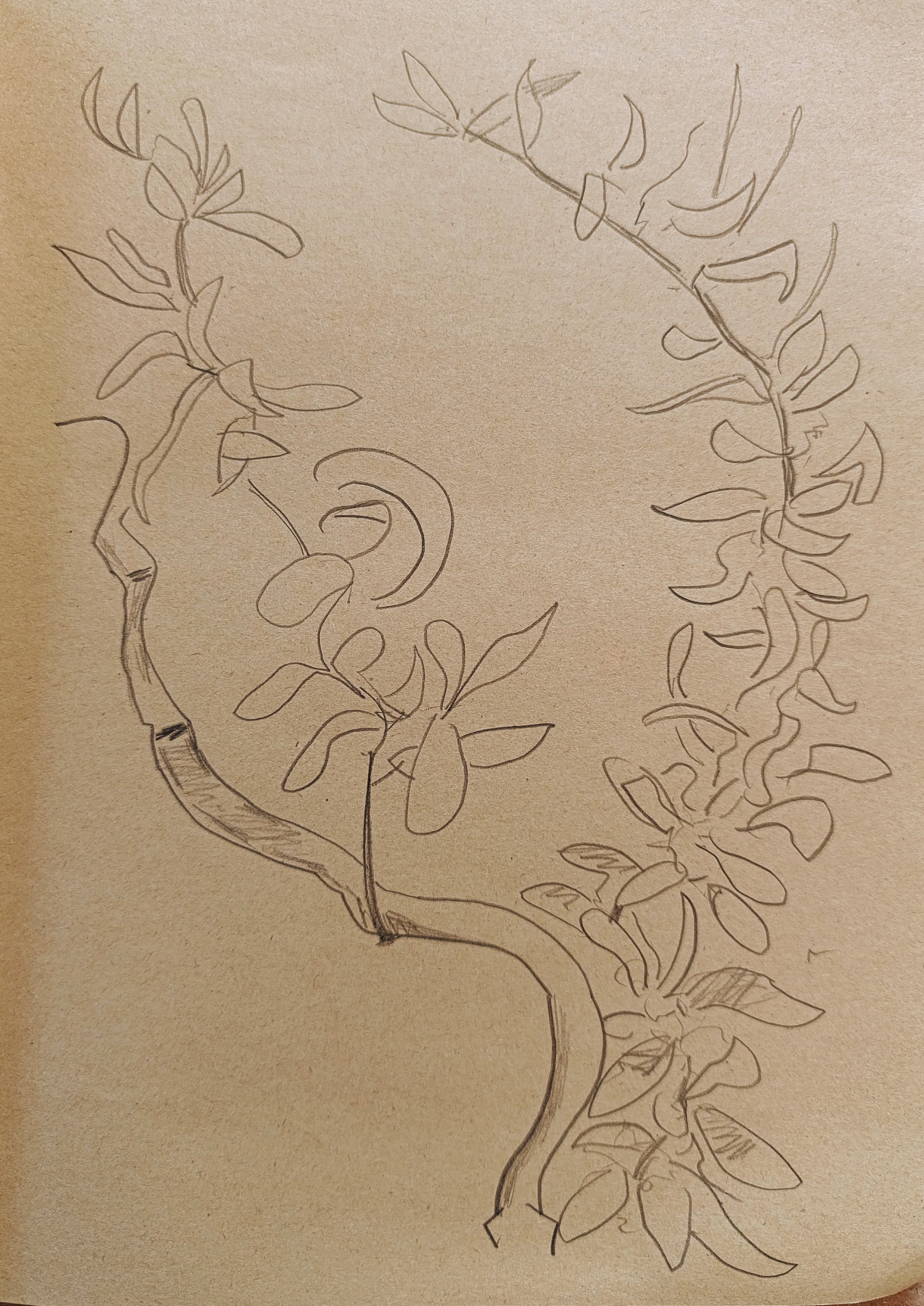April , 2025
Hazel and Willow
Hello dear ones,
During the month of April, Remon Stam and I have been working with two special beings: Hazel and Willow. In the past few weeks, the days have been stretching out their spines - filling our hours with more daylight. The scent of warm grass tickled my nose on an almost daily basis, as the urge to spend lifetimes in parks and dunes grew bigger and bigger.
Prior to this past month, the Hazel and I have been strangers. Starting out, I actually thought he was a tree of sorts, but it turns out the Common Hazel is actually a bush. The more you know! I started searching for him, looking out for the decorative yellow strands that grace him in early spring. I found the Hazel and his many layers upon layers of leaves in the community garden in my hometown. He waved me in closer, his twigs twisting and turning in all directions.
The specific hazel I met is about as tall as I am. This gave me the opportunity to observe every aspect of him, see how similar and different we are. I noticed the family of freckle-specked stems sprouting out of the same patch of earth. The all-ness of them shaping this one creature.
The Hazel is a nut-carrying bush, that provides protein for a variety of kin. Birds, such as Jays, Woodpeckers and Nuthatches joyfully snack on the Hazel. They might even leave a few hazelnuts for the Wood Mice. The leaves of the Hazel provide a source of life for other creatures, as they serve as a prime food source for moths.
In Gaelic, the word for hazelnut is ‘Cno’, which comes close to the Gaelic word for wisdom: ‘Cnocach’. It is therefore no surprise that the Celts saw the Hazel as a symbol of divine inspiration and insight. I love the idea that these properties were shared with humankind and a variety of critters, showing that Mother Nature does not hold back with sharing the virtuous pleasures that the Hazel houses.
What struck me on a botanical level, is that the Hazel has intricate manifestations of male and female flowerings. The male flowerings, called catkins (referring to the Dutch word ‘katteken’ or' ‘kitten) look like yellow cattails. They carry the pollen, which is spread by spring’s wind-filled weather. The female flowers are much smaller and bud-like. When pollinated, these buds become a home for the hazelnuts.
The multifold of meaning of the Hazel enchanted me. In the ode I created for him, I attempted to translate the dancing twigs, the rhythmic patterns of leaves and the dance between the male and female flowerings. The whole spectacle of the Hazel became a centre of enchantment, one for which I created a visual piece that referred to the same harmony and mysticism that I recognise in the Hazel.
This painting, called ‘The Druid’, is made of dune and earth pigments, iron, oil paints and pencil. I am grateful for the process and the new sense of understanding I have for the Hazel bush.
Sources:
https://www.vogelbescherming.nl/
https://treesforlife.org.uk
https://sussexwildlifetrust.org.uk
The Druid, 80 x 60 cm, dune and earth pigments, oils and pencil on cotton.
Remon finds value in painting by taking my time for the unforeseen and unspoken. He experiences a philosophical violence by being a sensitive person, because he wants to live a slow life in a fast world. Standing still and using his senses is his little revolution against the speed and automation of daily life. It's his way to enact the small acts of kindness that he cherishes. Remon’s motivation may be the love for a mountain, a person, a myth or a small tree, anything that makes me feel.
His experience with the Willow is expressed through painting and poem.
Remon Stam on Willow
Sweet Willow, whom I thought a Hazel,
You amaze me from the heart,
Play of twigs softly unfurling,
Knots of layered leaves,
Young wildling, winding,
Towards a spring coloured sky,
Fiercely testing gravity's hold.
Where I am safely below,
Entwined by twirling masts,
As with the maypole of old.





